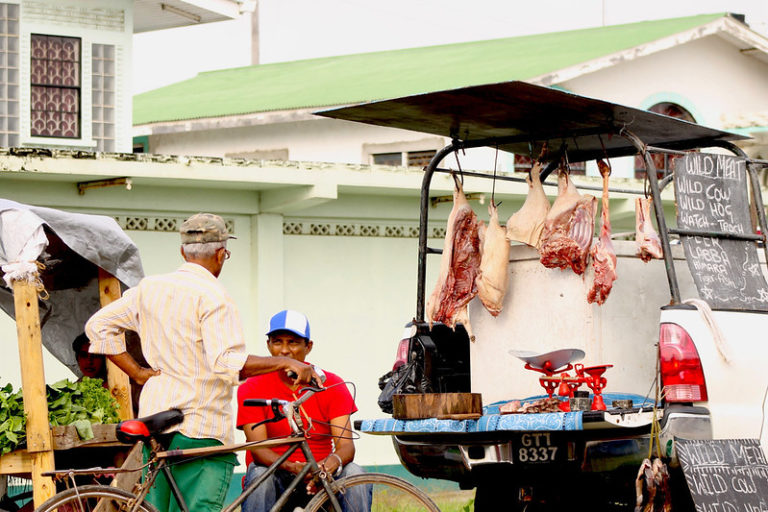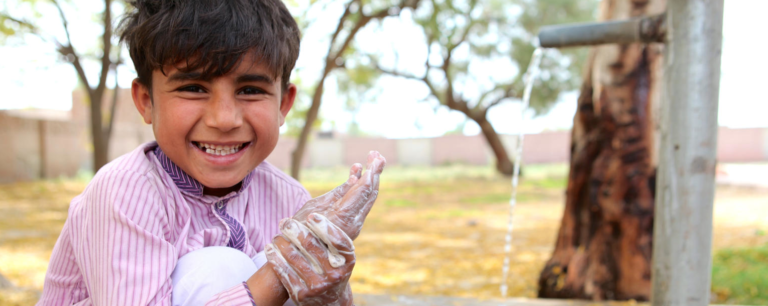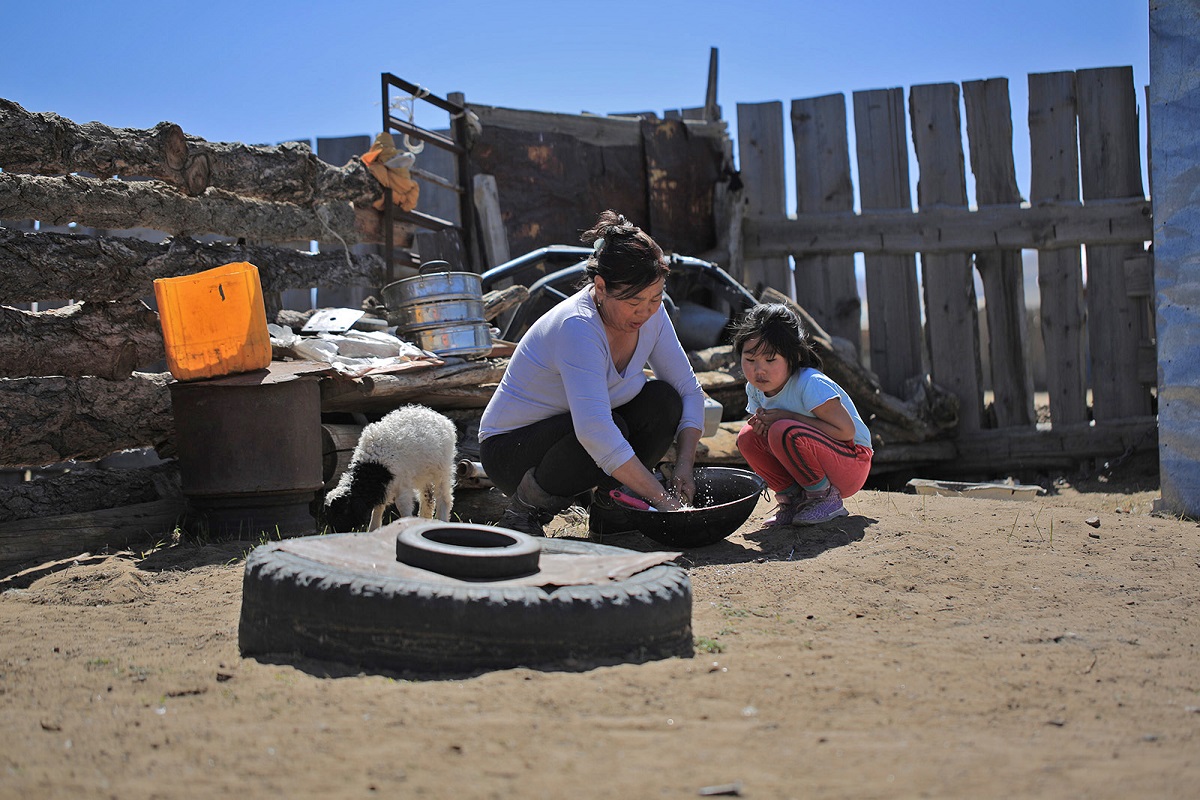The Sustainable Development Goals need to include One Health. And here is why.
First, let’s take a step back and consider how the SDGs emerged, with their adoption by the UN General Assembly in 2015. They represented a herculean effort by experts and countries over many years to provide a set of aspirational goals and methods to measure progress.
The headline goal for health was SDG3: “Ensure healthy lives and promote wellbeing for all at all ages”. An indicator to measure progress (target 3.3) identified major infectious disease concerns at the time, namely AIDS, tuberculosis, malaria, neglected tropical diseases to combat hepatitis, water-borne diseases, and included a catch-all phrase “other communicable diseases”.
Not surprisingly, there was no mention of Ebola (not yet recognized as a major threat) nor the interface between human-animal-environmental health, a concept then existing, namely “One Health”, but not seen as sufficiently developed or accepted five years ago.
Aspects of One Health were included in multiple SDGs such as SDG 13 (“Climate Change”) and SDG 15 (“Life on Land”). But nowhere is there an SDG or indicator which integrates One Health sectoral synergies, and ways to measure progress.
This in no way diminishes the work and benefits of the SDG process which dealt with the world as we knew it in 2015.
The world of 2020 is radically different; the spread of novel coronavirus-SAR 2, or COVID-19 is the overriding concern everywhere. It is widely accepted by scientists that COVID-19 originated in an animal, probably a bat, which crossed over to humans, probably through an intermediary species.

Such transfers have a long history. They have occurred in many forms, whether bacterial, viral, or parasitic.
And we will see more of them in the future.
To consider how One Health could become an SDG priority it is instructive to look at other multi-sectoral subjects that found their way into the development agenda as a priority. One such example is nutrition.
How Nutrition Became an SDG Priority
Sixty years ago, the United States began down this road when the first White House Task Force on Nutrition explored the possibility of a broadening role for government in international nutrition.
By the mid-1970s, a major document about nutrition had been read, absorbed, and garnered support among policymakers around the world: It was a study sponsored jointly by the Foundation for Child Development and the Brookings Institution called The Nutrition Factor: Its Role in National Development, authored by Alan Berg with portions by Robert J. Muscat and published in 1973.
By 2017, disbursements for international nutrition support amounted to nearly $10.0 billion annually, from governments, multilateral institutions, and private donors. The dollar amount vastly understates the extent of research, policies, and programs affecting lives everywhere.
It is fair to say that One Health today is where nutrition was in the last century. Nutrition was in everyone’s rhetoric but not on anyone’s radar as their number one priority, Neither the health sector nor agriculture nor social welfare took up nutrition as their primary obligation.
The same is now true with One Health.
In the 1990s, nutrition advocates and implementers became increasingly aware that greater visibility and better coordination was needed.
By 2002 an independent, non-profit foundation, the “Global Alliance for Improved Nutrition” (GAIN), was created to mobilize public-private partnerships to provide financial and technical support to better the lives of people most at risk of malnutrition, namely those in low and middle-income countries. GAIN works with governments, UN agencies, non-governmental organizations, and the private sector.
By 2010 the World Bank’s Scaling Up Nutrition (SUN): What Will it Cost? provided the nutrition community with a road map and identified 13 nutrition effectiveness interventions that could reduce child mortality. It subsequently led to many expanded multilateral and bilateral integrated programs, including the establishment, also in 2015, of the multi-donor Global Financing Facility (GFF) for Women, Children and Adolescents.
One of the first countries to join the GFF was Ethiopia. It has made remarkable progress in improving reproductive, maternal, child and adolescent health and nutrition, including assistance from a GFF sponsored Health Sector Transformation Plan that resulted in commitments approaching $750 million to increase equitable coverage.

How Nutrition History is Relevant to One Health
Much like nutrition in its early days, One Health is “somewhat” integrated into global thinking by building on scientific progress but remains no sector’s highest priority.
Deliberations of the international community, including special sessions of the United Nations General Assembly, the World Health Organization, the Food and Agriculture Organization, and the World Organization for Animal Health, multilateral and bilateral development institutions, have touched on the subject, but often without any agreed global direction.
This, however, has not meant the absence of concrete actions, efforts to search and test ways to implement the concept.
One Health is integrated into several development policies, programs, and financing, both at the country and regional levels. For example, Sub-Saharan Africa has had to deal with numerous zoonotic diseases in the last 20 years. Since the 2014-2016 West Africa Ebola outbreak, West and Central Africa programs for pandemic preparedness have incorporated One Health programs. The African Center for Disease Control and Prevention (Africa CDC), created in 2017 by the African Union, has made One Health innovation an important feature of its Southern Africa Regional Coordinating Center in Zambia.
And non-governmental actors have played a major part in broadening global awareness and attention, with many individual country One Health organizations and voices. In particular, a growing activist constituency has emerged around two major initiatives:
- One Health Commission (OHC), an information and advocacy organization started in 2007 with the forming of a One Health Initiative Task Force by Dr. Roger Mahr, President of the American Veterinary Medical Association, and
- One Health for One Planet Education Initiative (1HOPE) in 2019, led by Dr. George Lueddeke, the author of the recently published book Survival: One Health, One Planet, One Future (Routledge, 2019), a cross-disciplinary work that cuts across sociopolitical, economic and environmental lines.
Further, research universities and institutes around the globe have been working on aspects of the One Health challenge for many years. As a result of greater trans-disciplinary interactions, it has become possible to use more sophisticated tools to build the necessary scientific knowledge, detect infectious diseases, search for therapeutics and vaccines, and establish protocols for containment and mitigation.
Finally, an initial set of common principles and actions exist in “The Operational Framework for Strengthening human, animal, and environmental public health systems at their Interface” published in 2018 by the World Bank.
The Framework was a multi-partner effort focused on poverty eradication and boosting shared prosperity by systematically addressing One Health issues, all at the nexus of human, animal, and environmental health.
These include infectious animal and human diseases, aspects of vector-borne disease, food and water safety, and security and antimicrobial resistance. It seeks to offer a pathway for decision-makers to understand a One Health approach and concrete guidance for its application.
What Next for One Health?
The COVID-19 pandemic has the world’s attention. In so doing, it underscores the importance of the human-animal-environmental interface, the massive damage to both global security and economies everywhere, the rising threat to individual livelihood, food security, social cohesion, and damage to future generations.
COVID-19 will be with us for an extended period, and there is a high probability that other viruses will emerge as the next epidemic or pandemic.
At this writing, critical One Health building blocks exist but are fragmented, uncoordinated and without an agreed research agenda, policies, programming options, financing, monitoring, and reporting – all necessary for sustained action. And unfortunately, they are politicized.
Two actions can change the trajectory of our common future.
First, the SDGs must be modified to speak explicitly about One Health.
Second, a cross-agency commission with an independent status and a clear coordination mandate must be established to coordinate and consolidate global sectoral, governmental, private, and social and economic interests and chart a way forward. Such a commission should be composed of the major public and non-state actors in the international health community.
This would be in everyone’s interest. The United States, China, and the European Union joining with others and civil society, must work in concert to make this happen.
Our global health future depends on it.
EDITOR’S NOTE: The opinions expressed here by Impakter.com columnists are their own, not those of Impakter.com. In the featured photo: Washing up after preparing Guriltai Shul (Mongolian Noodle Soup) in Burd soum, Mongolia. Credit: FAO/P. Khangaikhuu.










